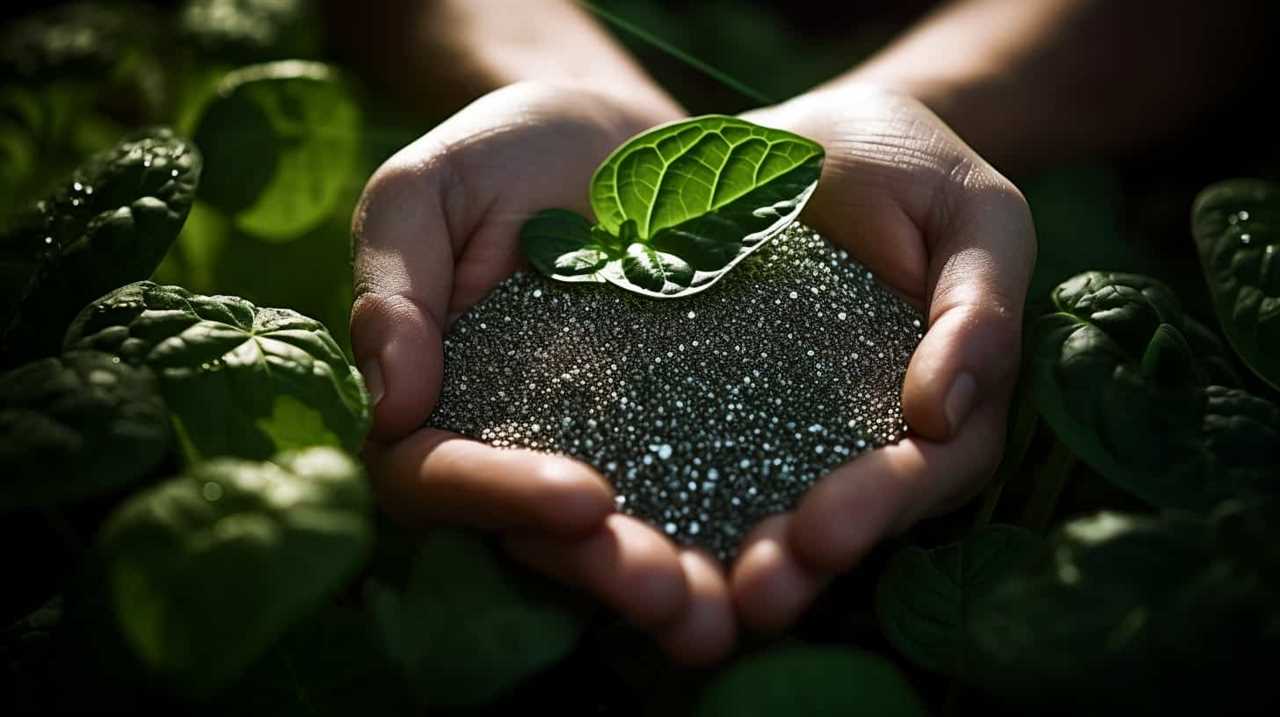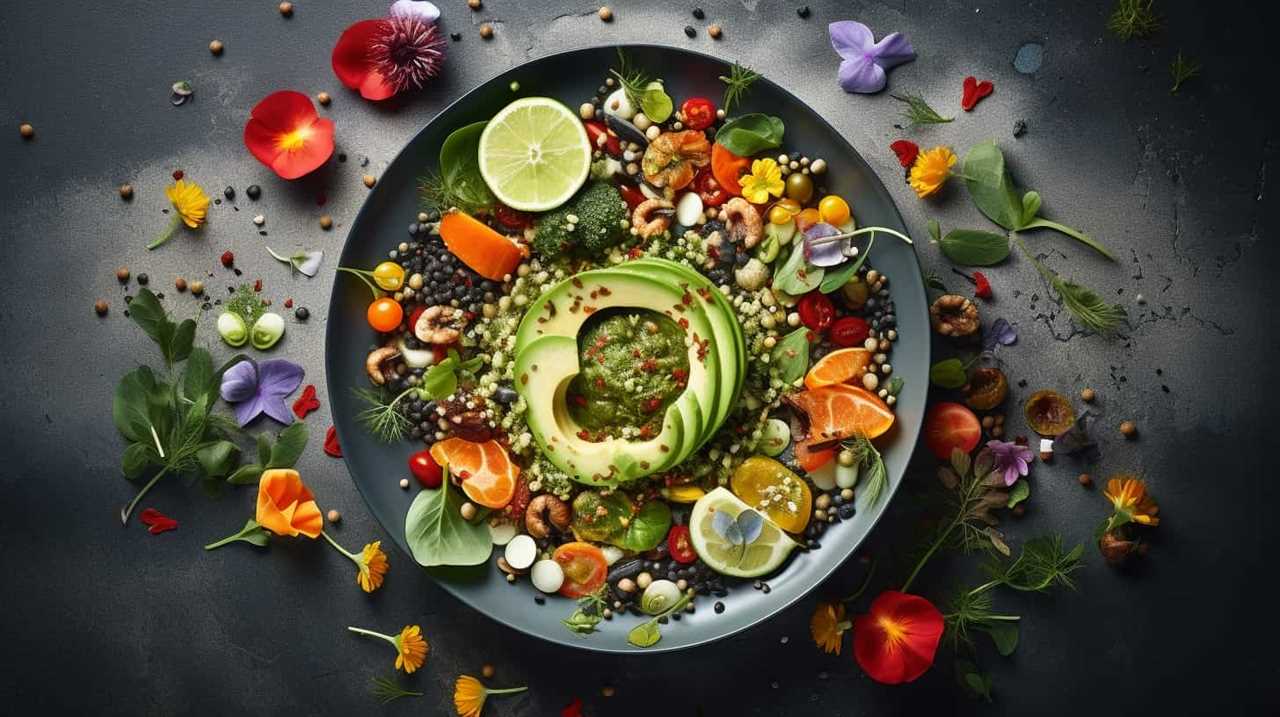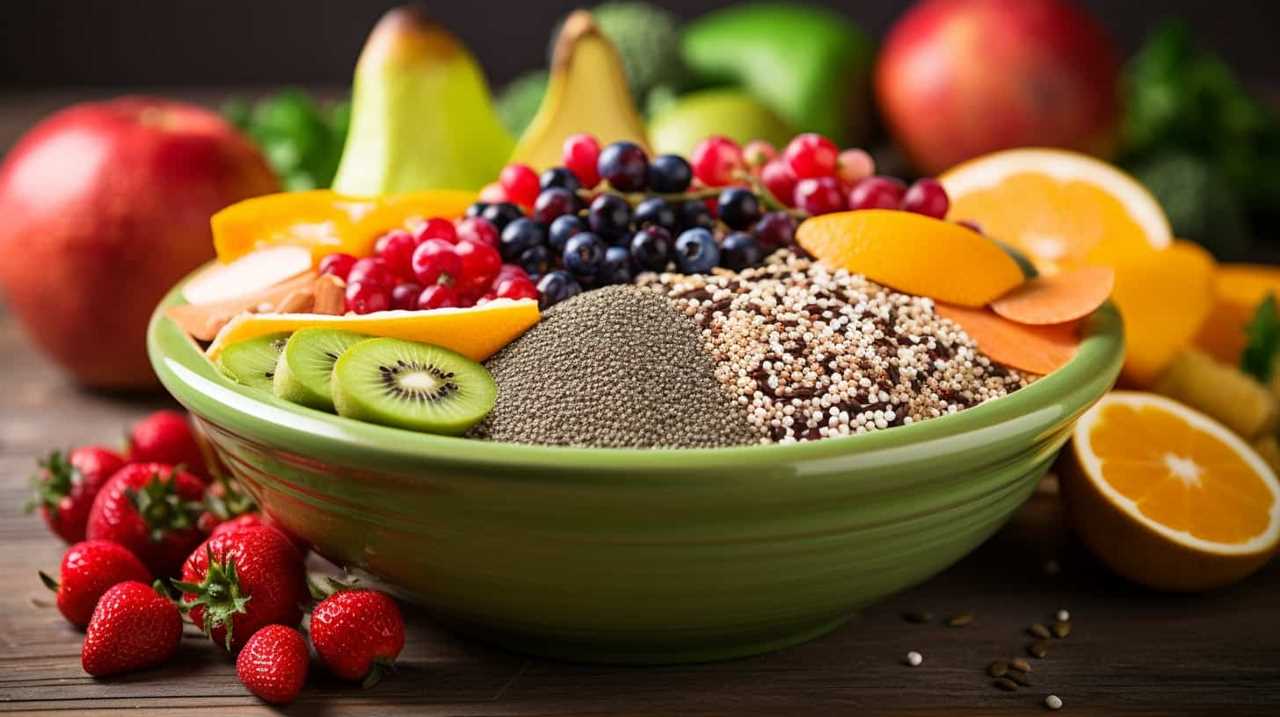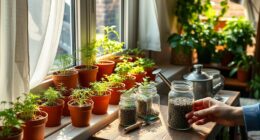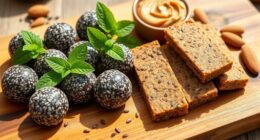Are you prepared to embark on the journey of successful commercial seed farming? Look no further, as we are here to guide you through every step of the way.
In this article, we will share our expertise on:
- Selecting the right chia seed varieties
- Preparing the soil
- Planting and germination techniques
- Effective weed control strategies
- Harvesting and processing methods
Get ready to unlock the secrets of flourishing seed farming and liberate your potential in the industry.
Key Takeaways
- Select chia seed varieties based on market trends and nutritional benefits for health-conscious consumers.
- Prepare the soil by removing weeds and debris, tilling the soil, adding organic matter, and conducting a soil test.
- Plant chia seeds in well-drained soil with a pH level between 6 and 7, sow at a depth of about 1/4 inch, and space them approximately 12 inches apart.
- Implement effective weed control strategies such as organic methods, crop rotation, mulching, hand weeding, and cover crops.
Selecting the Right Chia Seed Varieties
When selecting the right chia seed varieties for our commercial seed farming operation, we frequently rely on market trends and the nutritional benefits of chia seeds to guide our choices.
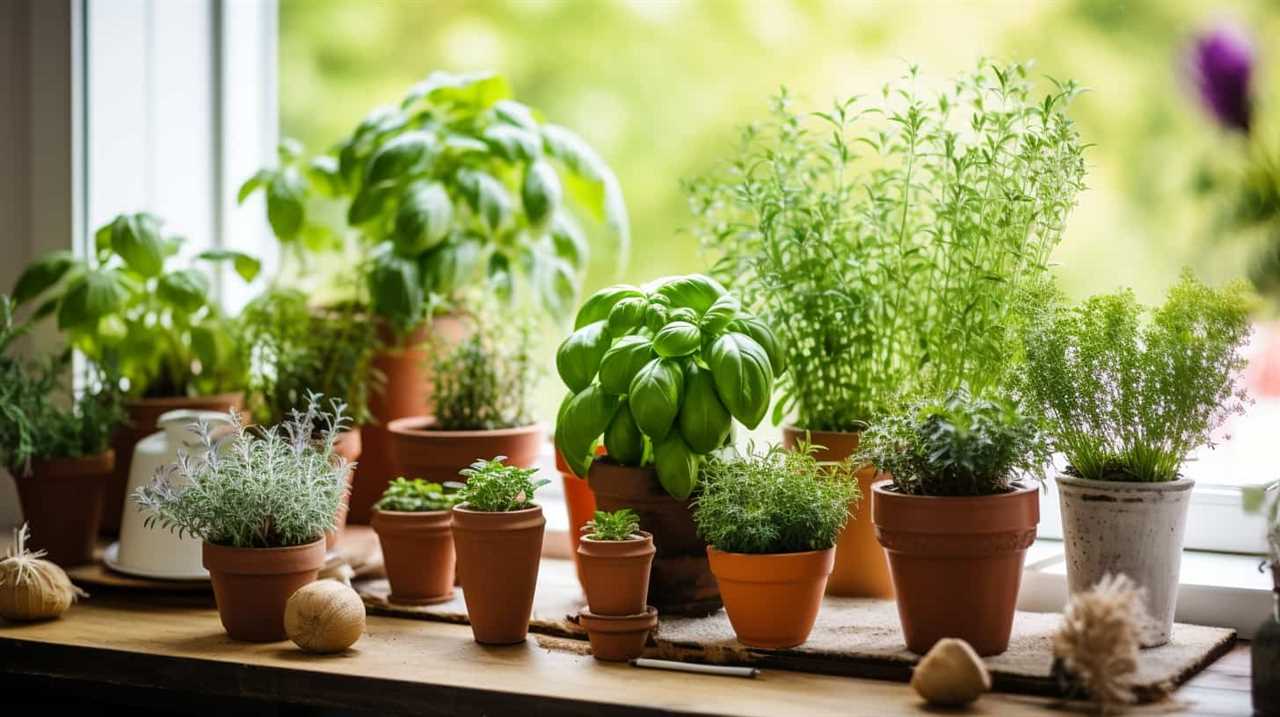
Staying updated on the latest chia seed market trends allows us to understand the demands and preferences of consumers, ensuring that we grow varieties that are in high demand.
Additionally, considering the nutritional benefits of chia seeds is crucial for meeting the needs of health-conscious individuals who prioritize nutrient-rich foods. Chia seeds are known for their high omega-3 fatty acid content, fiber, and antioxidants, making them a popular choice among health enthusiasts.
Preparing the Soil for Chia Seed Planting
To ensure optimal growth and yield, we carefully prepare the soil for chia seed planting.
Soil preparation techniques play a crucial role in creating a favorable environment for chia seeds to germinate and develop.

Firstly, it’s important to remove any weeds or debris from the planting area to prevent competition for nutrients and space.
Next, tilling the soil to a depth of 4-6 inches helps improve drainage and loosen compacted soil.
Adding organic matter, such as compost or well-rotted manure, enriches the soil with essential nutrients and improves its structure.
Additionally, conducting a soil test can help determine the specific nutrient requirements of the soil and guide the application of fertilizers.

Best Practices for Chia Seed Planting and Germination
In order to achieve optimal results in chia seed planting and germination, we rely on a compound preposition to guide our best practices.
When it comes to chia seed germination techniques, there are a few key factors to consider. Firstly, it’s important to ensure that the soil is well-drained and has a pH level between 6 and 7.
Additionally, chia seeds should be sowed at a depth of about 1/4 inch and spaced approximately 12 inches apart. It’s crucial to keep the soil evenly moist during the germination process, as chia seeds require consistent moisture to sprout.
Common challenges in chia seed planting include overwatering, which can lead to fungal diseases, and under watering, which can hinder germination.
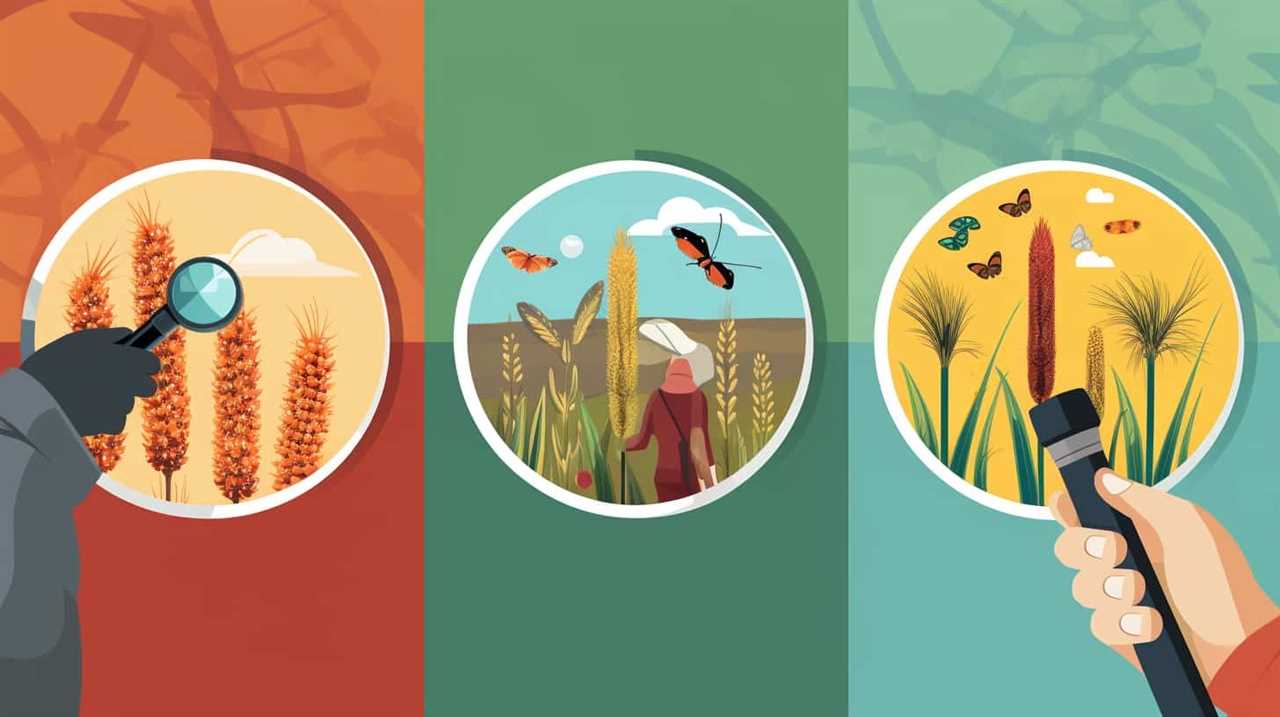
Implementing Effective Weed Control Strategies
To effectively control weeds on a commercial seed farm, we employ proven strategies. Organic weed control methods are of utmost importance to us as we strive to maintain the purity and quality of our seeds. We believe that using chemical herbicides can have harmful effects on both the environment and the health of our consumers, which is why we opt for natural alternatives. Crop rotation is another vital aspect of weed management. By rotating our crops, we disrupt the growth cycle of weeds, making it harder for them to establish and spread. It also helps prevent the buildup of weed populations and reduces the risk of herbicide resistance. Our commitment to organic weed control methods and crop rotation ensures that our seeds are grown in a sustainable and responsible manner.
| Organic Weed Control Methods | Importance of Crop Rotation in Weed Management |
|---|---|
| Mulching | Prevents weed growth and conserves soil moisture |
| Hand Weeding | Allows for precise removal of weeds without chemical intervention |
| Cover Crops | Suppresses weed growth and adds nutrients to the soil |
Harvesting and Processing Chia Seeds
We continue our farming journey by transitioning from weed control strategies to the crucial process of harvesting and processing chia seeds.
Chia seeds aren’t only popular for their nutritional benefits but also for their versatility in the market.
Once the chia plants have matured and the seeds have dried, they can be harvested by cutting the plants at the base and collecting the seed heads.

The collected seed heads are then threshed to separate the seeds from the plant material.
After threshing, the seeds can be further processed by cleaning and grading to remove any impurities and ensure uniformity in size and quality.
Properly processed chia seeds can then be packaged and marketed, taking advantage of their high nutritional content and growing consumer demand for healthy food options.
Conclusion
In conclusion, successful commercial seed farming requires careful selection of chia seed varieties, proper soil preparation, and effective weed control.

By following best practices for planting and germination, farmers can ensure a successful harvest.
Remember, just like a well-tended garden, a thriving seed farm takes time, effort, and a little bit of magic.
So, embrace your green thumb and watch your chia seeds grow into a fruitful venture.
Happy farming!
